POLITICS / JUNE 2024
Justin Trudeau’s Last Stand
In an exclusive interview, a confident prime minister addresses his doubters
BY JUSTIN LING
Published 6:30, April 10, 2024
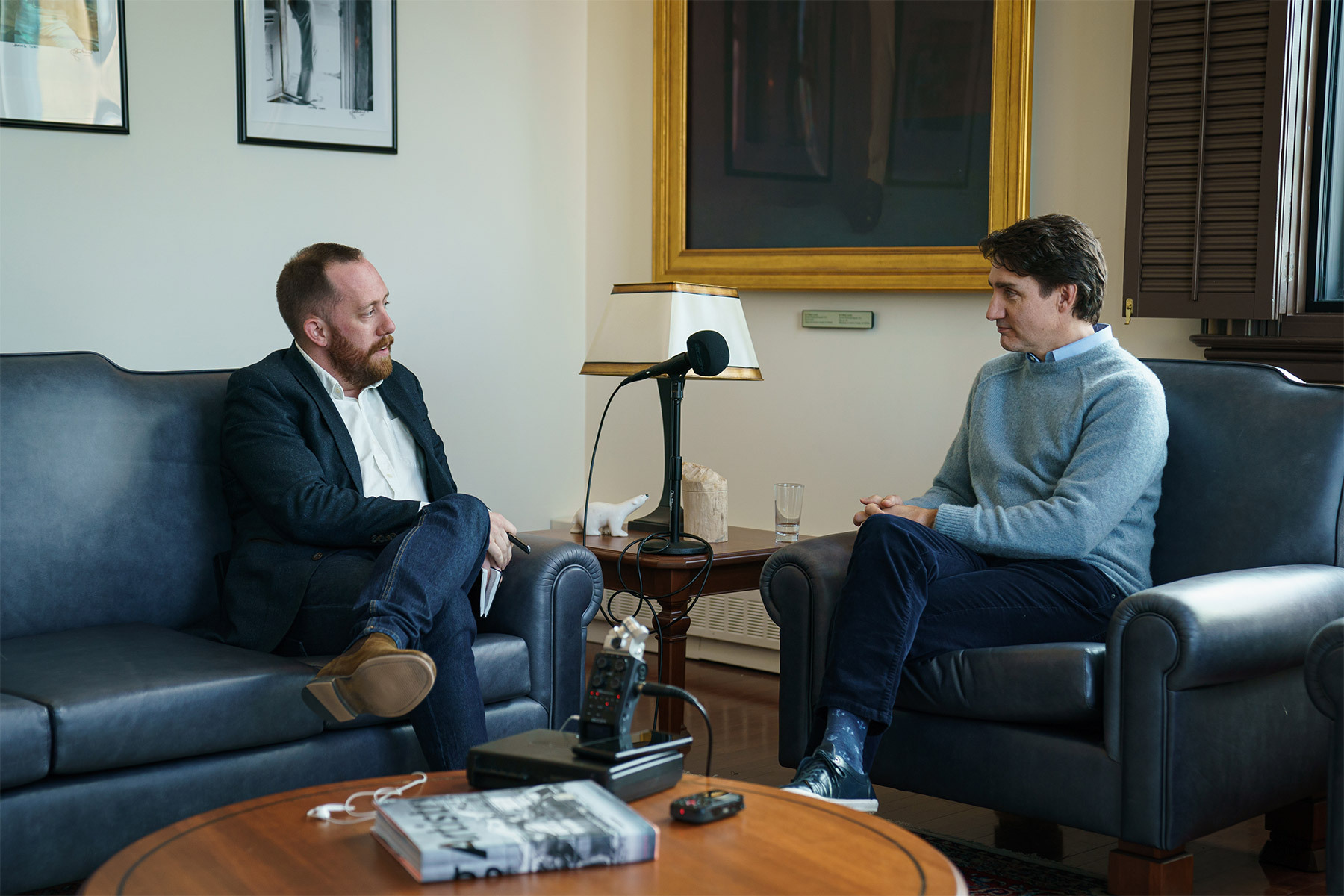
Inside the Queen Elizabeth Hotel in Montreal, Prime Minister Justin Trudeau is hunkered down with his cabinet for three days of meetings. Built in the postwar boom by the Canadian National Railway as the capstone of the city’s rail station, the hotel hosted heads of state and world leaders as well as John Lennon and Yoko Ono’s famous bed-in for peace. It’s a grandiose and imposing symbol from a time when Canada did big things. On this cold day in January, Trudeau and his team are holed up behind the building’s walls to get big things done again.
The mission, as projected onto screens inside the ballroom behind Trudeau as he addresses the assembled press on the last day of the retreat, is nothing less than STRENGTHENING THE MIDDLE CLASS AND BUILDING A STRONG FUTURE. “We know we’re in challenging times right now in the world,” Trudeau says. “And that’s why it’s so important that we have a government that continues to roll up its sleeves and take responsible, serious, steady decisions.”
Walk away from Trudeau’s earnest, measured tone, down into the lobby, and you enter a different world. From inside the ornate foyer, you can hear the chants of protesters just outside, incensed that Canadian weapon sales to Israel are enabling its pulverizing of Gaza. The city itself, once a bastion of cheap housing, has succumbed to a national crisis in which rents and property prices are rising faster than incomes. That is just one indicator of decay. There’s a health care system strained to the breaking point despite the hundreds of millions of dollars being pumped into it, and rampant inflation is making it difficult for many Canadians to afford basic necessities. Ask anyone on that street about the state of the country and they are overwhelmingly likely, at least according to a recent poll by Leger, to agree with the statement that “it feels like everything is broken in this country right now.”
When Trudeau hits the hustings for the fourth time next year, he will be the seventh longest-serving prime minister in Canadian history. Should he win, he will coast into sixth position, right behind Jean Chrétien, Sir Wilfrid Laurier, and then his father. For even the most ruthlessly efficient government, eight years is a long time in power. But the odds of him winning again look long. Polls have the Liberals careening to a massive defeat.
Some things driving voter disgruntlement are beyond the party’s control. Inflation is high all over the world. Health care and housing are primarily provincial responsibilities. The Liberals are quick to remind you of these things. But the depth and intensity of Canadians’ frustration cannot be chalked up to misunderstanding the division of powers or to misdirected anger. People believe that Ottawa should have stepped up, could have done better, and has failed to do so. The popularity of Conservative leader Pierre Poilievre, a pugnacious figure and unlikely frontrunner in regular times, is charting at unprecedented levels.
I’ve been covering Trudeau and his government, both closely and from afar, for the whole eight years they’ve been in power. Over the past year, I’ve spoken to dozens of insiders and outsiders—staffers, cabinet ministers, members of Parliament, civil servants, journalists, lobbyists, provincial politicians, Indigenous leaders, and a raft of others. Some were critics, some true believers, and many in between. There is an emerging consensus that something is fundamentally broken in Ottawa.
There are competing views as to how, exactly, Canada can turn things around. This state of affairs is not intractable. Nor is it specific to the governing Liberals. Whoever replaces Trudeau will inherit many of the same problems frustrating his efforts. But those who know this government best say it’s walled off from exactly how bad things have gotten. Trudeau is operating in, as one former insider told me, a “reality distortion field.”
So on a warm day this March, I boarded a train to Ottawa to ask the prime minister himself: Can you still fix the country?
The first time I sat down with Justin Trudeau, it was June 2015. So little did I think of the Liberal leader, then polling third behind the NDP and the Conservatives, that when his office reached out to me to propose an interview, I initially demurred.
What intrigued me was that Trudeau wanted to talk about something I’ve long been obsessed with: how to renovate Canadian democracy. Under the then-governing Conservatives, government had grown more opaque, politicians had become hostile to media, and fractious elections were producing inequitable results. Trudeau wanted to change that. He was vowing to replace Canada’s electoral system, which tended to give parties power disproportionate to their level of support; empower individual MPs; and improve transparency and accountability. No more secrecy, Trudeau promised as part of his platform back then: “We will restore trust in our democracy, and that begins with trusting Canadians.”
When we sat down that spring, four months before the election, I asked him about his pledge to significantly expand and improve the Access to Information Act, which empowers Canadians to request and receive government documents. Trudeau swore that he would go so far as to expand the act to cover his own office. One day, I would be able to request and receive his emails. “If you’re in a situation where you’re doing something you really wouldn’t want ending up on the front page of the newspaper, or on vice.com, the next day, you probably shouldn’t do it,” he told me, referring to my then employer. “In general, people should have access to how decisions are made and why the decisions are made by their elected officials.”
It may have been easy to write off this sunny disposition as low-calorie filler, but Trudeau’s plans were serious and detailed. And his team inspired confidence: at the top were Gerald Butts, a close friend of Trudeau’s tapped to work on a strategic vision, and Katie Telford, his chief of staff tasked with putting plans into action. A key tenet of Trudeau’s crusade was to do things differently—in particular, to ditch the tribalism which had plagued the Liberal Party in the early 2000s and the staid culture which had zapped it of life into the 2010s. The old guard had been declared persona non grata, and Team Trudeau was racing to put fresh, friendly faces into key jobs and on the ballot in critical ridings.
An ambitious plan, an adept team, and a charismatic leader came together to prove skeptics, myself included, wrong. The Liberals romped to a historic victory: the largest gain in seats by a party in Canadian history. It was lost on no one that Trudeau won a sizable majority, nearly 55 percent of the seats in the House of Commons, with less than 40 percent of the popular vote.
Team Trudeau set about trying to make good on its promises. Matthew Mendelsohn, a policy wonk with lengthy experience in government, was dispatched to the civil service to create the Results and Delivery Unit. Rather than focus exclusively on how to implement a given policy, Mendelsohn and his team fixated on the outcomes—and he would retool the policy as needed to improve those outcomes. It was a growing school of management policy called “deliverology” (although Mendelsohn never used the word).
Whatever you call it, it worked. Polimeter, a crowdsourced tool developed by researchers to gauge governments’ policy batting averages, assessed that, at the end of their first term, the Trudeau Liberals managed to achieve over 90 percent of their campaign promises—67 percent fully realized and the rest partially completed. A 2019 report concluded that the record was heads above that of any other government assessed retroactively by Polimeter, going back to 1984, Brian Mulroney’s first term.
Staffers, even disgruntled ones, speak wistfully of those four years in power, known in government circles as “Trudeau I.” A senior Liberal called it an “era of unbridled optimism.” The widely held feeling was that the Liberals were in the midst of reinvigorating government and that Canada was, as they themselves phrased it, “back.” Trudeau I would set the stage for an even more ambitious Trudeau II, III, and maybe even IV.
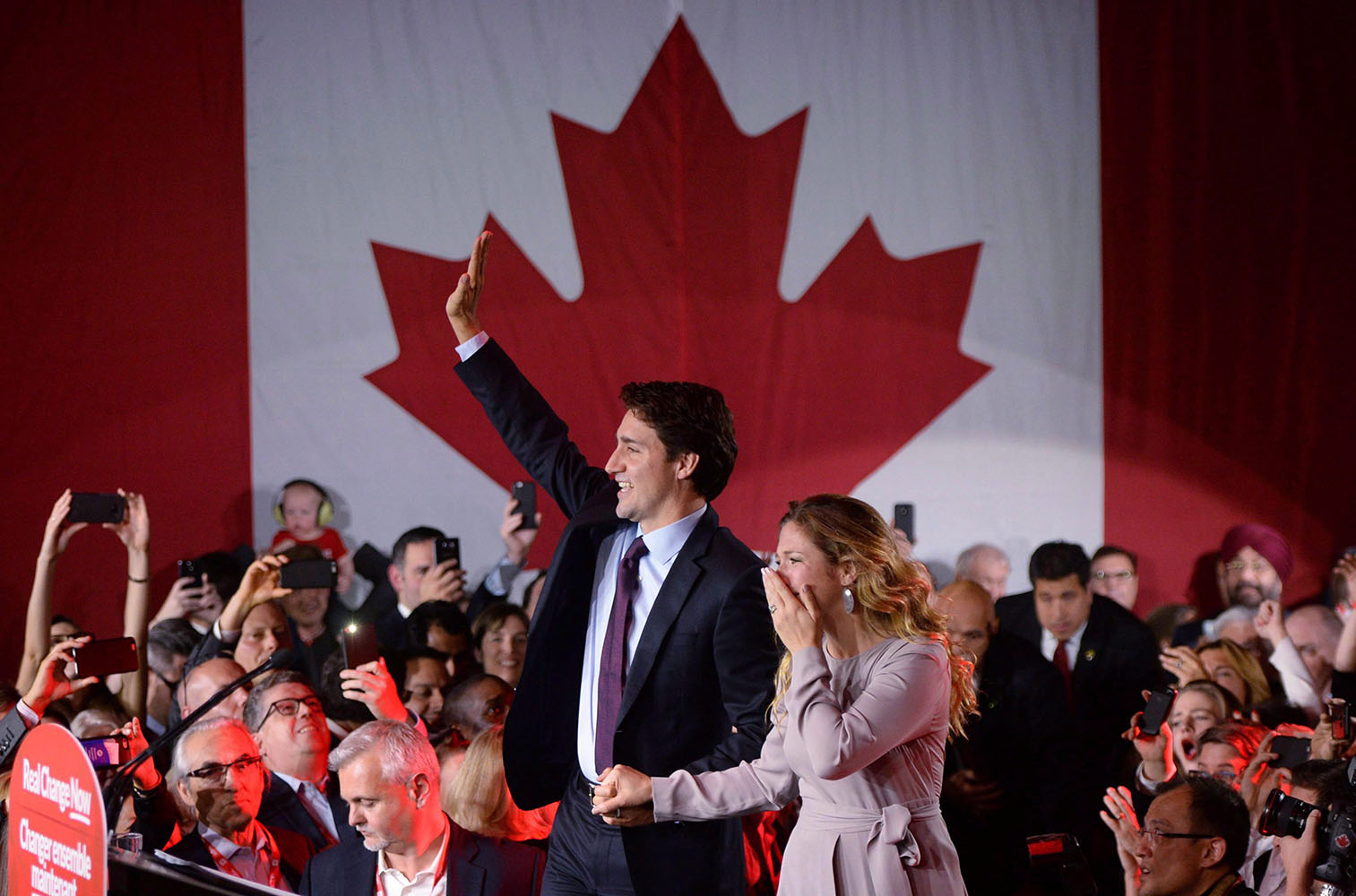
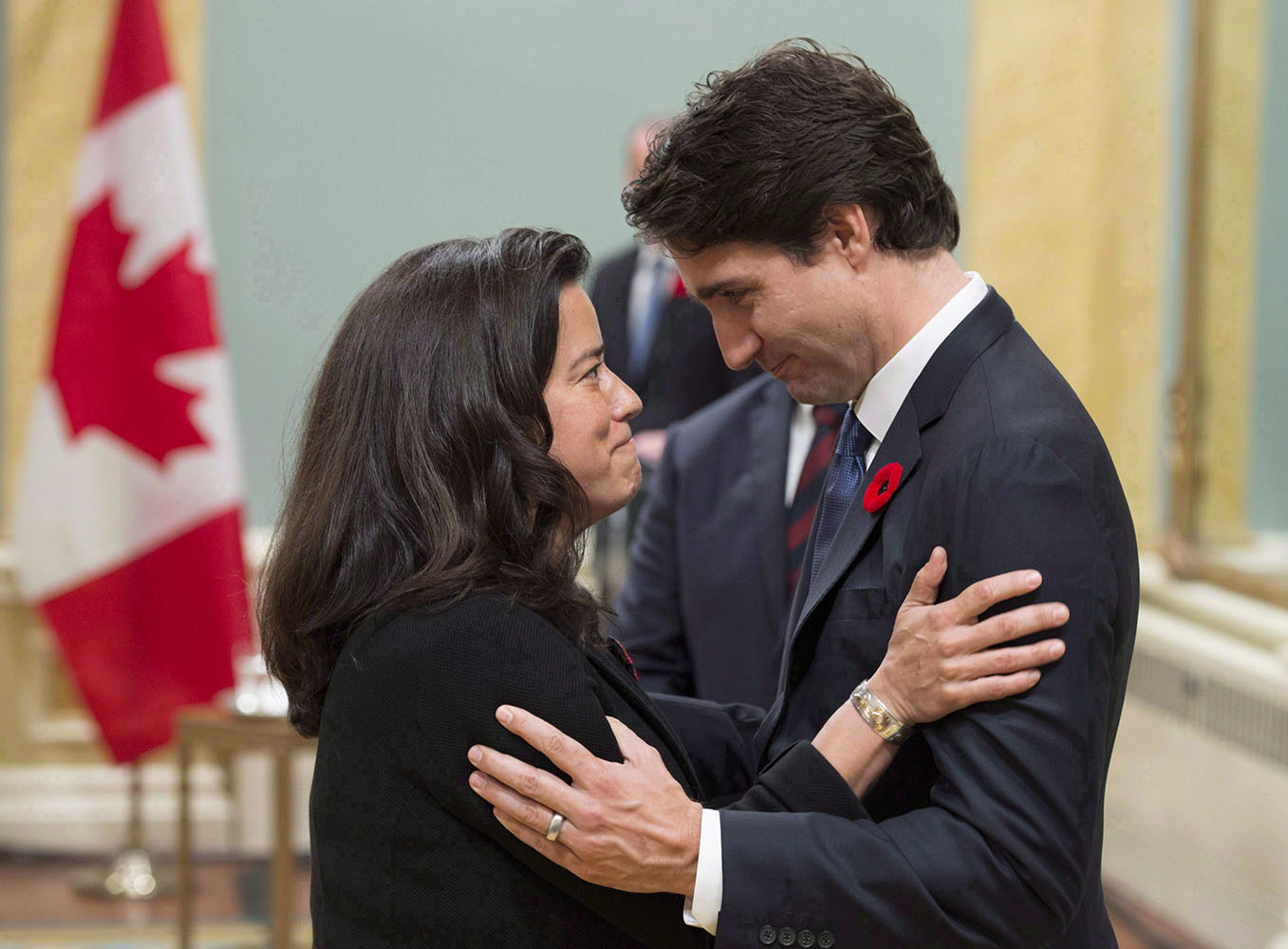
This belief was reinforced by real successes. They built out a new child care benefit, which experts credit with slashing childhood poverty. Trudeau legalized cannabis and taxed carbon emissions. He expanded the Canada Pension Plan and financed big new public transit projects in Toronto, Montreal, and Calgary.
In those first four years, I watched for signs that Trudeau was delivering on his promise to change how politics was done. They never came. Plans for electoral reform were scrapped when there was little support for Trudeau’s preferred system, ranked ballots; the House of Commons continued operating in its usual acrimonious way; and the access to information system became only more opaque. It was an early sign that the government’s ability to follow through had its limits.
The fifty-two-year-old who leaps up to greet me in his ornate office in March is basically the same guy who bounded into my spartan digs on the press gallery bullpen eight years prior. Over the hour we talk, Trudeau is the animated, engaged conversationalist he’s always been—he leans in; he interjects with a grinning rejoinder; he props himself up on his chair and tucks his legs underneath, as though he might leap from his seat altogether. It’s not hard to see why Canadians continue electing the guy. Even at his most frustrating, you can’t ignore that his passion for public service is genuine.
But the conversation is, certainly, frustrating. Trudeau’s rhetorical rhythm is easy to identify if you spend enough time listening to him. It is a strategy which permeates his government, adopted by his staff and ministers: acknowledge the problem, proclaim your values, talk about your successes, blame someone else.
This tactic is illustrated when I ask Trudeau why his promised transparency improvements seem to have come to naught. The information commissioner of Canada, long critical of this secrecy, declared last year that “it is clear that improving transparency is not a priority for the government.”
I ask Trudeau when transparency stopped being a priority.
“Turns out,” he responds, “that transparency was, of course, a good thing and something we’re striving for. But there was so much more to do about shifting government into the mindset of actually delivering for people.”
I push back: What happened to the leader who declared, eight years ago, that people should be able to understand how and why decisions are being made in the halls of power?
“I, actually, sort of take issue with that,” he says. “Yes, the access to information regime specifically still has challenges. So that’s why we’re still working on it. But to say that that’s the only way people covering the government can actually see what the government is doing carries a bit of cynicism with it—because [it implies] you can’t believe the press conferences, because you can’t trust the announcements.”
You were here under the ancien régime, Trudeau tells me, “you know what a secretive government looks and behaves like.”
He’s right. There’s no doubt that this government is more accessible to the media than its predecessor was. But that doesn’t mean the quality of the information coming out of Ottawa has improved. Getting a straight answer has become, as any journalist can attest, next to impossible. The access to information has become measurably worse since the Harper years, and this government’s plan to “work” on it involves mostly cosmetic changes. The Liberals have fought tooth and nail to resist disclosing documents in high-profile cases, such as the investigation into two government scientists fired from a secure government lab in Winnipeg—over two years of obsessive secrecy, absurd speculation, and misinformation were allowed to run rampant.
During our conversation, Trudeau mentions something which, I assumed, had been long forgotten: the Mandate Letter Tracker. It had been a core piece of Mendelsohn’s deliverology. Like the Polimeter, it was meant to report on the progress on key priorities assigned to each minister via mandate letters assigned by the prime minister. One job for the environment minister, for instance, was to “review Canada’s environmental assessment processes.” That was judged to be “completed/fully met.”
To visit the tracker now, things look good—it proclaims some three-quarters of promises have been completed. But that, in and of itself, is a broken promise. Despite vowing to update the tracker four times a year, the site was last updated in June 2019. A message now greets visitors to the site: “We have archived this page and will not be updating it. The Government of Canada is facing exceptional circumstances due to the COVID-19 pandemic.”
I point out to the prime minister that they have largely given up on tracking their campaign promises. He shrugs a bit. “I guess one of the criticisms that I’ll have for how we’ve behaved as a government is: we’ve always done a better job of doing things than of talking about the things we’re doing.”
Canadians’ increasingly dour mood isn’t a result of the government’s failure to communicate. There is a pervasive feeling the country is coming apart at the seams. Vancouver, like other Pacific coast cities, is facing an unprecedented rise in drug use, homelessness, and urban decay. Alberta has elected a government committed to waging war against the federation—and may try to bankrupt the national pension plan in the process. The North continues to suffer from a dearth of basic infrastructure, preventing economic development and hobbling our ability to patrol the quickly thawing northwest passage. Saskatchewan, Ontario, and Quebec have all used the constitutional notwithstanding clause to, respectively, mandate the outing of transgender children in schools, forbid types of political advertising, and limit the rights of religious minorities in the workplace. Fears over the slow collapse of the health care system in Canada are driving existential anxieties.
At the centre of it is Trudeau’s government, which appears not in control but a hapless spectator.
If I had to pick the moment the government began breaking down, it would be February 2019. That’s when the Liberals were rocked by the SNC-Lavalin scandal, in which Trudeau was eventually found to have overstepped his authority in trying to cajole his justice minister, Jody Wilson-Raybould, into cutting a deal with a shady engineering firm. Butts, a close friend of Trudeau’s and the staffer often credited with devising the government’s long-term strategy, volunteered as the fall guy. He quietly went off to work on their re-election campaign and did not come back to Ottawa when they returned with a minority government.
He wasn’t the only loss. Wilson-Raybould and Jane Philpott, two senior ministers who had been strong voices around the cabinet table, resigned from cabinet and were booted from caucus by Trudeau’s MPs. The departure of Butts and other senior staffers meant a higher role for individual ministers. Chrystia Freeland, in particular, rose to the finance portfolio and became a sort of minister for everything. Trudeau’s trust in his cabinet, however, was rattled. The past five years have been an interesting “lesson in loyalty,” as one minister phrased it. These shifts have made the inner sanctum of government smaller and more insular.
One MP, using their hands to illustrate, described to me the concentric circles of this government. There is a small nucleus of the most senior staff, such as Telford, and just a few close advisers. The rings surrounding that atom are only narrowly bigger, with a few, maybe five, senior cabinet ministers and chiefs of staff who have considerable sway; then ten or so other senior Liberals in the next rung; and so on. One thick outer ring contains the vast majority of the Liberal caucus, the MP said, who consider themselves merely “tolerated” by the centre.
There is a belief that the criticism from the outer rings is not reaching the centre and that the marching orders from the centre are being diluted as they emanate out. It makes for a deeply inefficient system.
The caucus has been largely docile about this power imbalance. Trudeau does not try and rule his caucus, as Harper had. Instead, his relationship is obsessively amicable. Open disagreements, even behind the closed doors of the caucus room, have been rare. MPs without cabinet posts hope one day to earn them and prefer to sound supportive instead of speaking their mind. There are fewer than a handful of MPs who are willing to be vocally offside. Some who have been caught disagreeing with federal policy have been known to quickly backtrack and endorse the party line. “They don’t like dissension,” one MP said. It won’t be punished, but it certainly isn’t encouraged.
It was only amid declining poll numbers and rampant inflation last year, at a caucus retreat in London, that MPs began to voice displeasure. They complained that they didn’t even have Telford’s phone number. Telford, alive to the criticism, projected her cellphone digits onto the screen for MPs to jot down. That seemed to momentarily quell concerns.
But it was the humanitarian catastrophe in Gaza which prompted the starkest divides in caucus. Those disagreements, which MPs tell me have been exceptional over their time in office, have provoked policy shifts. Or, as is characteristic of this government, policy flop-flops. Ottawa initially decided to withdraw funding for the United Nations Relief and Works Agency for Palestine Refugees in the Near East, for example, only to reinstate it weeks later.
The caucus’s frustration now mirrors the nation’s—namely, that the government doesn’t seem to wise up to an emergency until things get really dire. One former Liberal minister told me that they found themselves, in lulls between crises, asking, “What is our North Star? What’s our moral compass?” They had a hard time finding an answer.
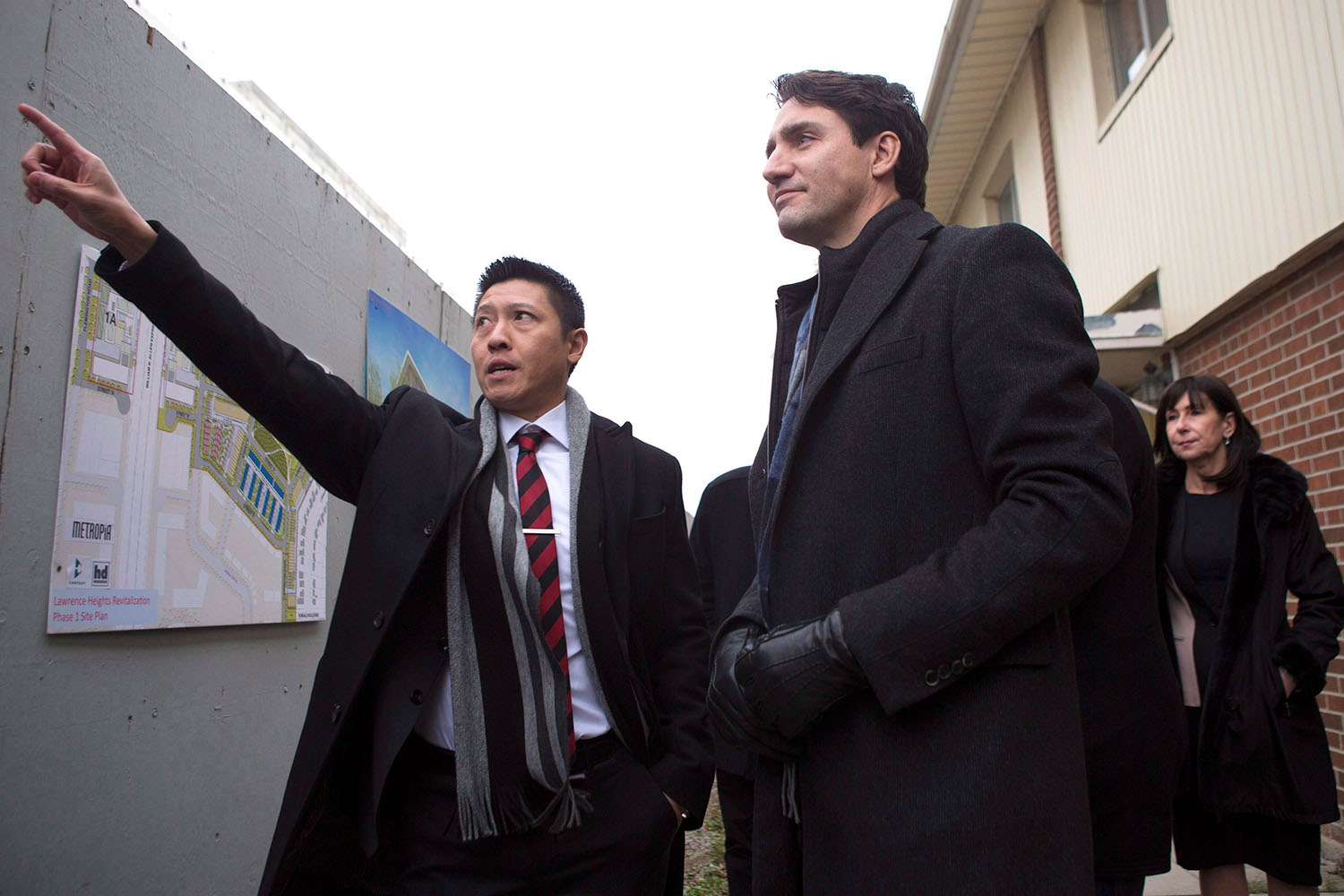
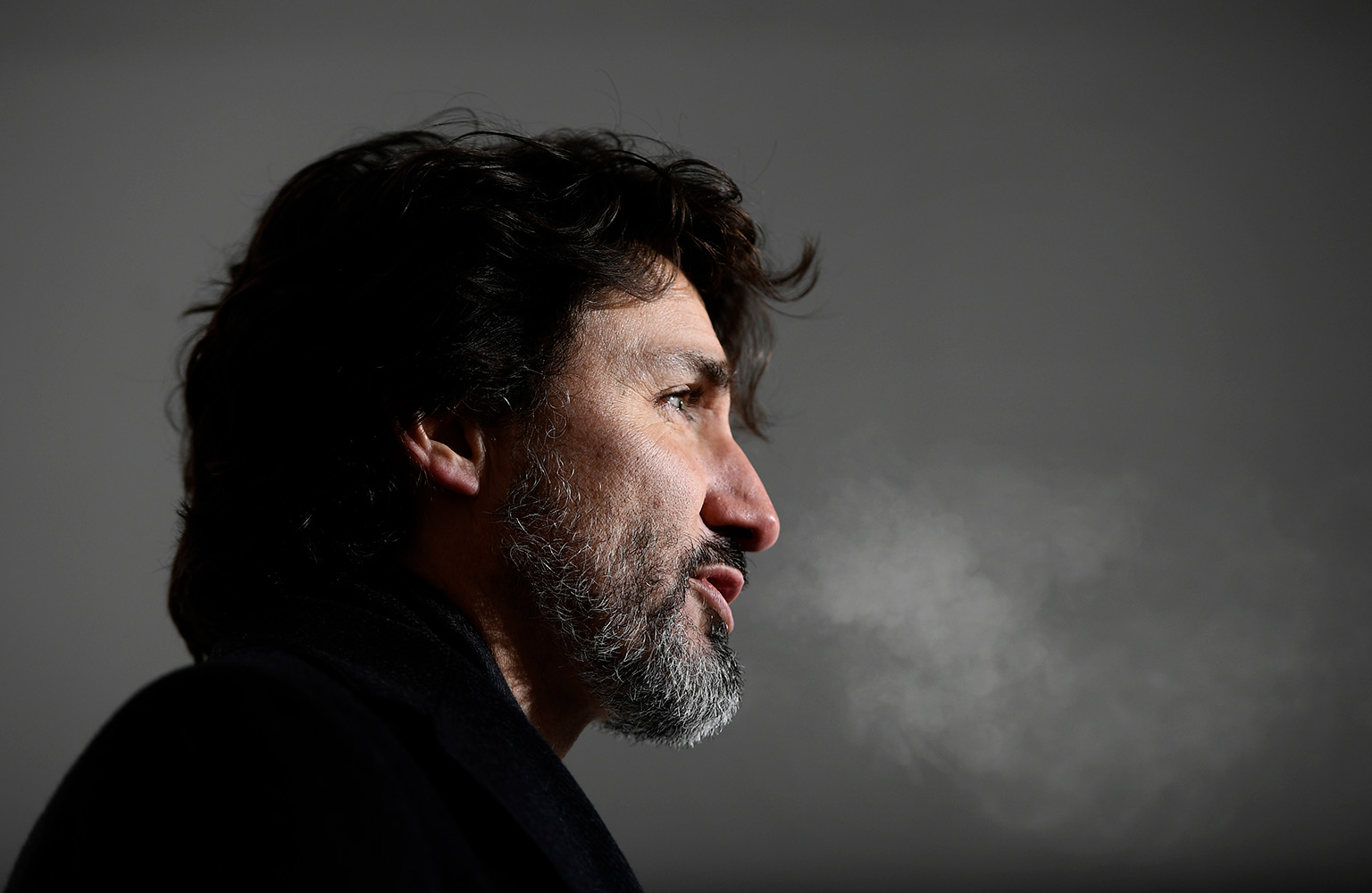
In our interview, Trudeau is quick to point out that his government can thrive in a crisis. Even amid the COVID-19 pandemic, Ottawa rolled out the Canada Emergency Response Benefit, procured enough vaccines for everyone in the country, and kept the economy from imploding. If it focuses on a single task, Team Trudeau can deliver.
But governing is not solving one problem at a time; it is juggling hundreds of files simultaneously. And such multitasking seems to stymie the Liberals. Major decisions can be held up for months, even years. It took Ottawa four years to bar Chinese telecommunications giant Huawei, on the basis of security fears, from Canada’s 5G infrastructure. The delays are driven by indecision, insiders say, or by a lack of capacity and focus amongst the inner sanctum of senior staff.
Some of this is natural. “Over time in government, demands go up and patience goes down,” one former cabinet minister said. “Bandwidth goes down too.” But the scale of Liberal floundering seems unique. The Liberals abandoned plans to regulate down drug prices, failed to bring clean drinking water to all First Nations communities, and didn’t allocate promised funding to wildfire preparedness until infernos raged across the country last year.
One major variable in why words don’t translate into action is bureaucracy. When I asked one former official to grade the current state of government, I was taken aback by their answer. “I have zero confidence in the capacity of the federal public service to deliver on serious challenges,” they told me.
One former civil servant, who worked on high-profile technology files across multiple departments, said the bureaucracy was suffocating—“nothing could move forward,” they told me. A vast network of problems conspires to frustrate actual innovation: too many teams working on the same files, an obsession with image over application, petty competition for resources, a lack of information sharing, buck passing, silos between teams. The mismanagement is so dire, they said, that civil servants often work on technology projects in secret, afraid of telling their superiors lest they get mired in approvals and meddling.
They recalled an episode where a piece of tech, built by technology-literate civil servants, made its way up the chain to more senior officials. Those officials brought the technology to the Prime Minister’s Office and told Trudeau’s team that the application was powered by AI. When word filtered down to those who had actually built the technology, they were horrified—the app had nothing to do with AI at all. They were corrected: if senior officials say it’s AI, they remembered being told, “you’re going to say it’s AI.”
Some of Trudeau’s governing penchants have made these problems worse, the former civil servant told me. “And anytime something goes wrong, the immediate response is more process, more paperwork. They don’t know how to do anything else.” Indeed, there are 100,000 more people working in the civil service than when Trudeau took office eight years ago. The result, the ex-bureaucrat said, is a “bloated” bureaucracy. “If you keep adding teams of people who don’t do real work, you get into a situation where things can’t progress,” they said. Another, current, civil servant agreed: “Our processes are archaic, super cumbersome, and unnecessary.”
With the right political leadership, any civil service can leap into action, but without direction, departments spin in circles, creating work with no effect—civil servants will “go into meetings forever,” the former senior official said.
I present these warning flares to the prime minister.
“I think one of the things that perhaps makes it not as clear as you’re laying it out,” Trudeau begins, “is there’s a lot of areas in which the public service is able to deliver really innovative and positive solutions.” He offers up some positive examples—such as creating a new industrial strategy for rare earth minerals and deploying AI—and cautions against focusing on the ugly ones. “Yes, you can pick certain reports that show failings,” he says. The public service is like a supertanker, Trudeau continues: sometimes it can be hard to turn around.
But the tanker is actually stuck in the canal, former civil servants told me, and the government refuses to admit it. These civil servants, I’m told, have been gleefully watching hearings at the Standing Committee on Government Operations and Estimates (OGGO). The parliamentary committee has been investigating ArriveCan—an app conceived of and designed by the civil service but taken over by a nesting doll of consulting firms which ballooned the cost to an astronomical $59 million. It has become symbolic of Ottawa’s messy and ineffective procurement model. But according to an internal “lessons learned” document about ArriveCan, one of the core problems which led to the boondoggle was a lack of leadership and direction from cabinet. “A central governance authority was needed,” it reads.
Some civil servants went so far as to print stickers featuring an angry-looking Canada goose and the phrase “MIGHTY OGGO.”
They are cheering on an investigation into their own dysfunction.
The Trudeau government frequently talks up its willingness to consult with citizens. “There had been a government that had grown far too insular in terms of who it listened to and who it engaged with,” Trudeau tells me, referencing his predecessor. It’s been a refrain he’s used since before taking office: Ottawa would do better to survey real people, experts, and stakeholders about how to enact change, not Bay Street hatchet men. “I can tell you,” he tells me, “that engaging with Canadians and with experts on how to best move forward on projects has effectively been incorporated into what we’re doing and has led to much better outcomes.” Internally, however, there is cynicism on how Ottawa fields that input.
Consider the Pacific salmon. There have been mounting concerns, and data to back it up, that salmon stocks along the West Coast are on the verge of collapse. A commission, struck in 2010 to study the issue, found one possible stress causing the decline of wild salmon along the BC coast was diseases spread by open-net pens. In Trudeau’s first term, successive fisheries ministers were tasked with acting on the inquiry’s report. Multiple consultations stretched over years. By the 2019 campaign, that pledge had hardened into a promise to ban open-net salmon fishing by 2025.
And then, it never happened. More consultations were held and were wrapped up last summer. Still nothing. Localized depopulation has raised the possibility that the stocks along the Pacific coast may collapse entirely. In 2021, Ottawa announced $647 million to address the problem—but they have remained unwilling, or unable, to do the one thing that has been identified as a key solution, dating back more than a decade. When Fisheries and Oceans Canada surveyed Indigenous groups about their plans to save the salmon stocks, for a report released in 2022, the respondents “expressed feeling overly solicited by DFO and other government departments to provide their perspectives.” They felt “these perspectives are only included at a superficial level (if at all) in decision-making.” Today, the Liberals are still running consultations on whether to implement the ban they promised to enact.
According to the government’s open information portal, the Government of Canada has conducted nearly 1,000 consultations from 2016 to 2023. (The real number is likely higher, as the government’s open data portal is unreliable and incomplete.) These consultations range from the practical to the absurd. In early 2023, the Canadian Space Agency consulted Canadians “on a modern regulatory framework for space.” They received forty-nine written submissions, none of which have been released publicly. Another consultation, on the proliferation of AI systems, was slammed as “odd” and “secretive.”
One premier recounted to me a bilateral meeting between themself and a senior Trudeau minister, meant to solicit views on a critical policy matter. They were told the minister had been called away—a parliamentary secretary would be sent instead. When they arrived, the minister’s stand-in proceeded to read from a set of talking points prepared for the meeting. Whenever the premier and their staff interjected to make a point or ask a question, the parliamentary secretary went back to reading their notes.
“There’s consultation that happens for optical reasons,” one current minister told me. “And there’s consultation where it nets really helpful feedback.” And then there’s the third category: when consultation is used as an excuse not to do things. In other words, according to a former senior official, it “can be a substitute for action.”
Trudeau, true to form, says there’s no problem. “I have also seen examples where, after consultation, we haven’t picked up on the recommendation of an individual. And that individual has then turned around and said: ‘Well, I wasn’t really consulted.’” It’s hard not to feel called out by this comment. In 2021, the government opened a round of consultations on the Access to Information Act. I, along with a number of colleagues, submitted detailed briefs. Months later, the government issued a report entitled “What We Heard.” The result had no bearing on what we had said: that the act needs to be overhauled to end the culture of secrecy. The report concluded the system needed only tweaks, no wholesale change.
Even as the government swears it is taking in feedback from regular people, stakeholders, and experts—there are some glaring examples to the contrary. Last year, interim RCMP commissioner Michael Duheme held a press conference to respond to a scathing, in-depth investigation into how his force had handled a deadly 2020 mass shooting in Portapique, Nova Scotia. The report not only found a cascading series of failures but it also identified a litany of problems which had been raised in other critical reports in recent decades and which had been left unresolved. It was so dire that the panel at the Mass Casualty Commission recommended that “the demonstrated capacity to accept responsibility for one’s errors should be a criterion for any promotion within the RCMP.”
At the press conference immediately after the report was released, however, Duheme refused to accept that the RCMP had made any mistakes at all. He told reporters that he hadn’t actually read the report yet. He didn’t apologize then, nor did the service apologize in the months that followed.
This March, a year after the report came out, the commissioner finally offered a half apology, telling the families of those twenty-two victims: “I’m sorry for the mistakes that were made.” The commissioner insisted “we are taking responsibility.” When I asked the commissioner to actually explain the mistakes his service had made, however, he declined to identify any.
Why has the RCMP been allowed to dance around this issue for so long? “That’s a legitimate question,” Trudeau says, pensively. There are problems in the RCMP, he admits. But “there is a lot of work going on, to build towards how to actually ensure that the RCMP is the right institution, with the right tools and the right abilities to keep Canadians safe.”
I repeat the question: If you couldn’t do this one thing, the one thing that the commission said was absolutely urgent, how can anyone have faith in such an institution? Trudeau suggests that change is coming. “The commissioner of the RCMP, right now, was, until just a few weeks ago, an interim commissioner of the RCMP—”
He was promoted, I interrupt, despite the fact that he didn’t take responsibility.
Trudeau declines to get into the specifics of the commissioner’s promotion but recalls how he sat down with the families of those killed in Portapique. “I made them a commitment and a promise, that I have not forgotten, that I was going to deal with this. And I am going to keep that promise.”
Before the interview, sitting in the antechamber of Trudeau’s office, waiting to be ushered in, one of his press secretaries quizzed me about my work. I had covered the previous Harper government. They wanted to know what it was like.
I provoked some arched eyebrows when I said that I preferred covering the Conservatives. After all, I said, it felt like their government actually listened and responded to the criticism. Sometimes, sure, they would defiantly reject any critiques and wage war on us journalists. That was bad. But other times, they would launch into action and attempt to fix the problem. Orders were passed down the civil service, and political staff would stay on top of those files until the matter was resolved. It may not have been the right reaction, or the right policy, but you could be confident that the government would act. In other words: it felt like our reporting mattered. This wasn’t unique to the then governing Conservatives. It is supposed to be how politics works. Journalists—and activists, researchers, academics, and civil society more broadly—underline shortcomings, and the government reacts. This government, I told the press secretary, seems particularly immovable.
I would be a hypocrite if I didn’t accept some responsibility for my own camp. The Parliamentary Press Gallery, hollowed out by bankruptcies, layoffs, and cutbacks in recent years, is not operating at the same level it once did. Fewer hands carrying more work has prompted us to prioritize process stories and political gamesmanship over real policy questions and investigations into the machinery of government. We have to accept some responsibility for our national decline. But we have certainly tried to put some of these issues on the front page, and it hasn’t made much of a difference in Ottawa.
Five years ago, I flew to Charlottetown to cover an unusual PEI election. The Green Party was surging, threatening the two-party dichotomy that had long dominated Prince Edward Island’s politics. What struck me was that a top issue for Islanders, just behind the mainstay complaint of health care, was housing.
I remember sitting in a microbrewery at the end of a muddy road along the coast and chatting with its twenty-something bartender. She had turned down a well-paying job in the capital because housing costs would have left her poorer. She felt the governing PEI Liberals were sleeping on an affordability issue that was becoming a defining concern for Islanders, especially the younger generations. When election day came, the party was turfed from office, falling behind both the Progressive Conservatives and Greens. I began writing a lot more about the coming political reckoning on housing, as did a number of my colleagues.
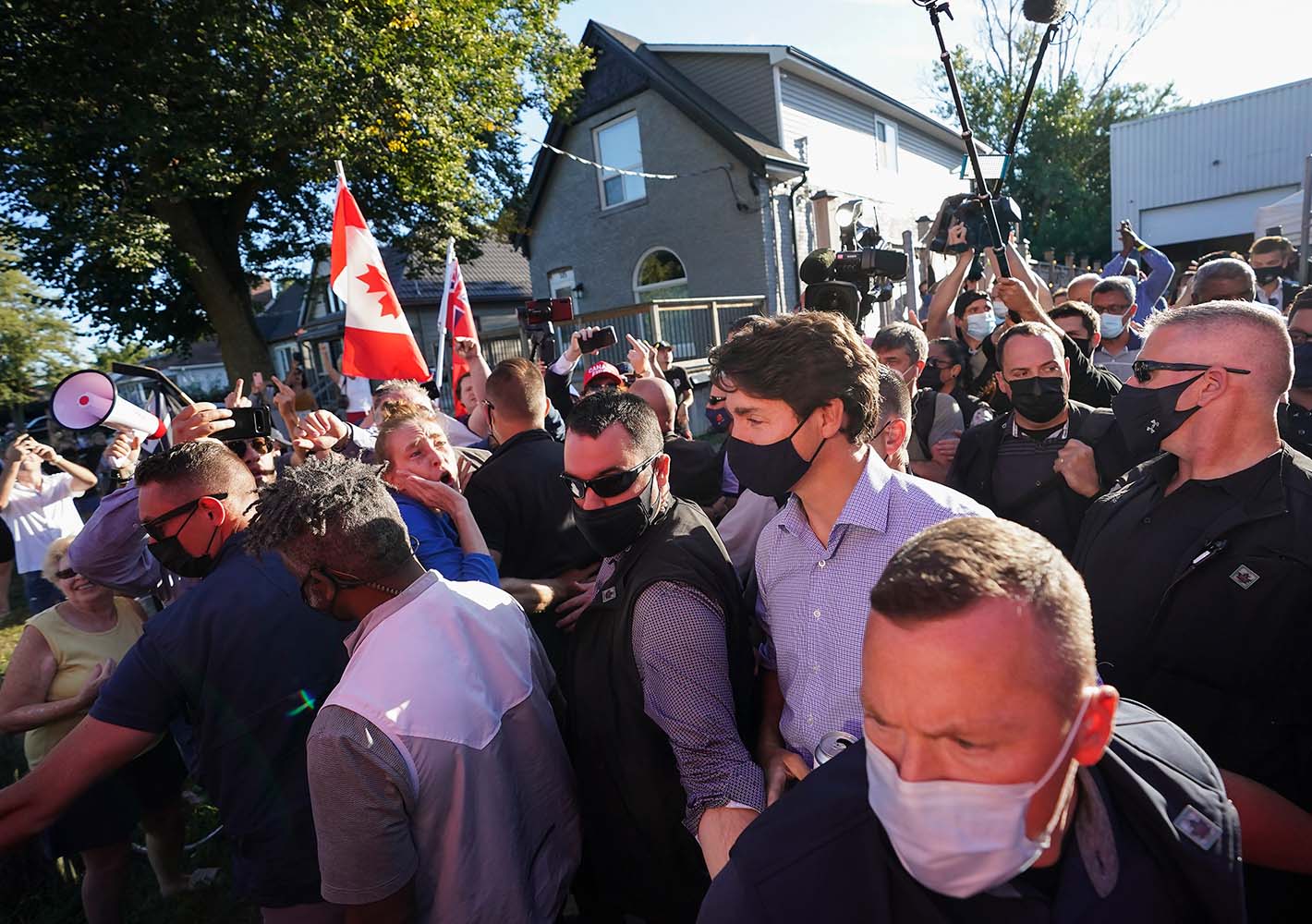
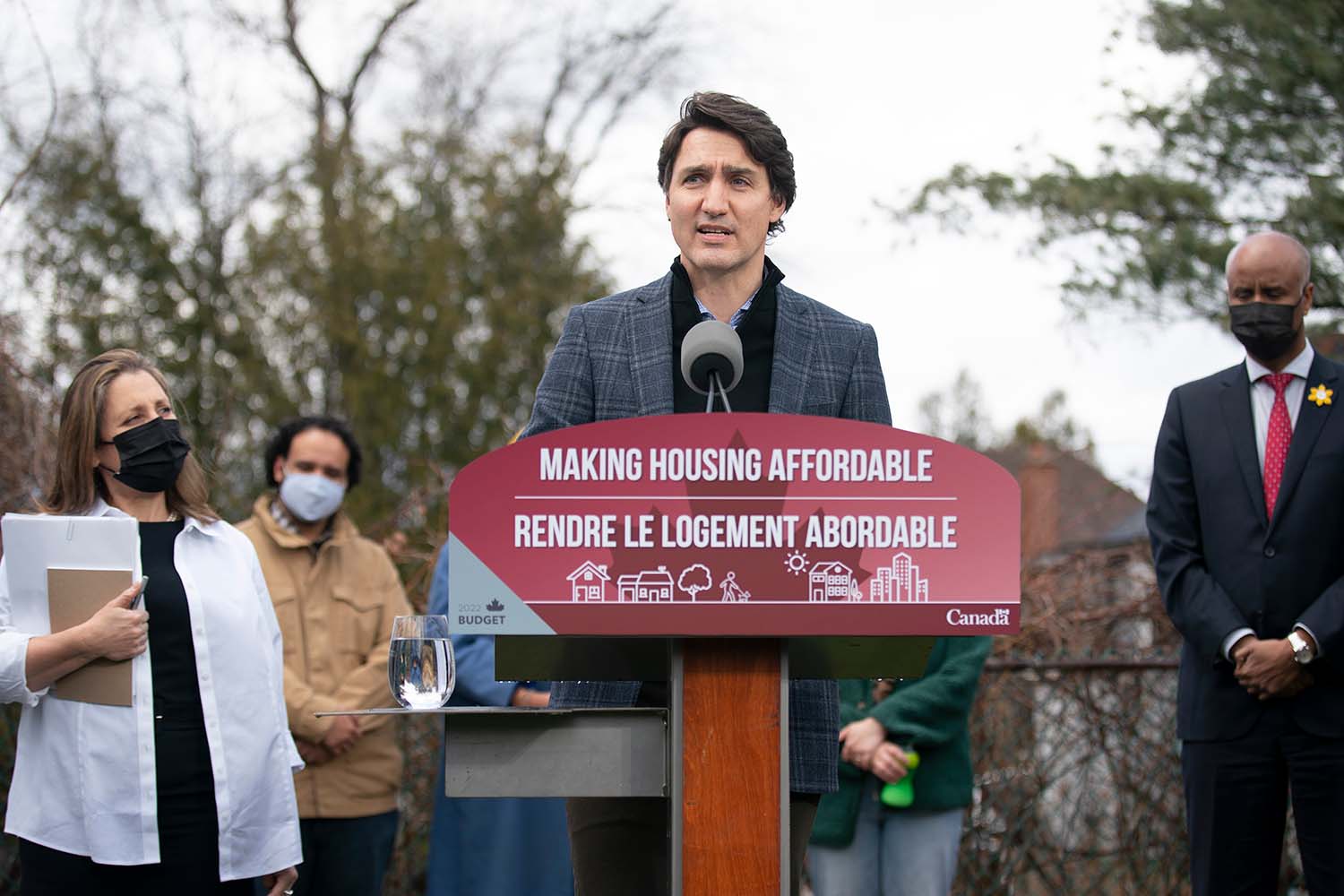
These days, you don’t need to cast far to find tales from the front lines of the housing crisis. Yet Trudeau has seemed consistently blithe about the problem. When pressure started to ramp up last year, he offered the defensive remark that housing “isn’t a primary federal responsibility.” He was technically right but practically wrong. (In our conversation, Trudeau chides his predecessor for the same sentiment: “The previous government pretty much got out of housing, said: ‘No, the federal government doesn’t have any role to play in housing.’”)
Immigration, however, is a federal responsibility, and Ottawa has consistently raised its planned intake levels year over year. When you add up the permanent residents, the asylum seekers, the temporary workers, and the student visas, Canada is seeing almost 1 million new people enter the country annually. This is no accident; it was the plan. Yet, in April, the prime minister remarked that immigration has “grown at a rate far beyond what Canada has been able to absorb.” It should have come as no surprise; but the fact remains the country hasn’t been building enough housing for these arrivals.
One ideal way to handle this—necessary, beneficial—influx of people is to build new public transit to connect them with places to live. Trudeau recognized this quickly after taking office and established the Canada Infrastructure Bank to help enable that kind of mass-transit future. Quickly, the bank funded some big projects, including Montreal’s Réseau express métropolitain and Toronto’s Go Transit expansion. But since its running start, the bank has struggled to actually find projects to fund. The parliamentary budget officer found that, of its $35 billion eleven-year mandate, some $19 billion remains uncommitted.
Trudeau says the bank’s operations are “transformative.” But despite setting up the bank to propel big nation-building projects, he admits, “Canada doesn’t always have those kinds of projects in a singular item.” So now, he says, the bank is looking to “bundle” and fund smaller projects.
Mass public transit is a great way to build out cities and give people more options for places to live and work. But the core of the problem is still housing. And on that front, Trudeau stands by his record. “In 2017, we put forward a National Housing Strategy, worth $70-some billion,” he tells me. “Subsequent to that, about 2.5 million Canadians got into new homes, or refurbished, or renovated, or new affordable [homes], or new co-ops, or old co-ops that were fixed up—whatever it was, that’s the number we delivered on it.”
The parliamentary budget officer disagrees. In a 2019 report, they found the government’s strategy “slightly reduces targeted funding for households in core housing need.” Two years later, in 2021, Canada had succeeded in directly funding the construction of just 63,300 new units, while it renovated another 126,000. The housing shortage had risen to 1.8 million. It’s gotten worse since then. Canada Mortgage and Housing Corporation estimated last September the country needs an additional 3.5 million housing units by 2030. That’s above and beyond the 2.3 million units expected to be built by that time.
Why did your own numbers, I ask Trudeau, not come to fruition?
“Well, partially they did,” he says. “But, partially, the federal government doesn’t do a lot of building housing alone and directly.” Hinting at the very real opposition to building new housing at the municipal and provincial levels, Trudeau says their efforts meant “working with partners, and some partners have been great. Others have been more challenging.”
What has defined great governments in Canadian history has been a willingness to innovate when things get challenging. After the Second World War, Ottawa established the Canadian Mortgage and Housing Corporation to build homes for the returning veterans. It constructed thousands of units per year and financed the construction of tens of thousands more: a much faster pace than Ottawa can muster today.
Indeed, Trudeau boasts about his new Housing Accelerator Fund and Housing Infrastructure Fund: they would fund housing directly at the municipal level, but only if the city is willing to speed up new, dense housing developments. Embarrassingly, however, it wasn’t the Liberals’ idea. Trudeau’s plan to offer a carrot to cities who zone for more housing came only after Pierre Poilievre released his policy vowing to do the exact same thing, but threatening to use the stick.
There is good reason to think that Trudeau will eke out another victory when voters head to the polls in 2025. His previous two victories were earned with the same strategy: to thoroughly trash the Conservative Party as a dangerous threat to our country’s liberal values. He is likely to deploy it again against Poilievre, who seems to relish such an accusation. It may work.
But that comes at a cost. Politics has grown rapidly partisan, polarizing, and vitriolic in recent years. Trudeau highlights this growing “toxicity in partisan politics, where opinion becomes identity in a way that we hadn’t seen in a long time,” he says. “And my job is to continue to reach out and I’m not going to give up on it.” He notes that the politicians attempting to strip religious minorities and LGBTQ2S+ youth of their rights are the very same ones labelling him as divisive. “We’ve entered a very different kind of politics,” he says. In this new kind of partisanship, defined more than ever by misinformation and polarization, building consensus feels impossible.
I put it to the prime minister that he bears some responsibility for that trend. His own criticism of Canadians—particularly a much-publicized condemnation that many vocal anti-vaxers are “often misogynists, also often racists”—fuelled some of this animosity.
“Do I think that my choice to actually speak my mind in an open way can easily not be the perfect right thing to say? Absolutely,” he says, admitting that sometimes he phrases things indelicately. “But what’s my choice? Either it’s to be so carefully scrubbed and scripted that I never say anything that anyone could ever take out of context? Or do I show a little bit of passion, do I show a little bit of ability to use colourful language when I’m upset? When I’m pissed off? When I’m frustrated?” To self-censor, he says, would mean “I start second-guessing myself and don’t trust my own instincts.”
But Trudeau’s problem, I’ve found, has not been his bluntness. It’s his bunker mentality. Most Canadians no longer believe he’s following through on the solutions he’s stumping for.
He remains adamant that his policies and achievements, such as bringing new auto manufacturing back to Southern Ontario, will send the message that the Liberals understand the needs of communities facing tough times and “actually allay those fears with solutions.” Ever campaigning, he believes that Canadians will see that his opponents offer only “nihilism and negativity.” But this strategy—big-ticket announcements, followed up by clobbering his opponents—just papers over the deeper problems with his tenure.
It’s not just his opponents who are dismayed at the state of his government. Even members of Team Trudeau have ideas for how Ottawa can get back to work. MPs I spoke to said that Trudeau’s long-forgotten pledge to give more power and responsibility to the Liberal caucus would help reconnect this government to the people they represent. Staffers, past and present, said new talent at the top levels of the Prime Minister’s Office could reduce the bottlenecks in decision making. Civil servants said there is a desperate need to untangle the institutional thicket making their jobs difficult.
They’re all right, I think. But if this government hopes to heal itself, Trudeau himself will need to appreciate—not explain away, or deflect, or tamp down—the anger that people are feeling. He used to do this. For years, he relished holding open town halls with the general public. There, people levied criticism and concerns, unvarnished and earnestly, directly at their prime minister. It was a kind of radical accessibility that has generally been uncommon in Canadian politics. But these events slowed down as Trudeau faced more and more irate protesters at his events. They stopped entirely during COVID-19 and haven’t fully returned since. Now, instead, Trudeau holds town halls at specific venues with invitees—union members or employees of a particular business. It removes much of the spontaneity.
I ask Trudeau if this growing distance between him and the public is a problem.
“I would actually contend that that distance, which, yes, necessarily opened during the pandemic, has become closed once again,” he says. He concedes, though, that the protests and hecklers have had an impact. “Every time I’m doing a public event that people are busy protesting and shutting down, part of it is, yes, protesting against me and my policies,” he says. “But a big part of it is trying to make sure that people can’t actually have an interaction with their prime minister.”
Then comes Trudeau’s patented deflection. “I’d actually contend that if that’s the impression you’re getting,” he says, referring to the idea that he is increasingly remote from voters, “then people are successfully casting that impression.”
This is perhaps the most unreal moment of the whole interview. Observing this government from its unlikely beginnings to its probable—if the trend maintains—end, it strikes me that there is only one solution ahead of them: accept reality.
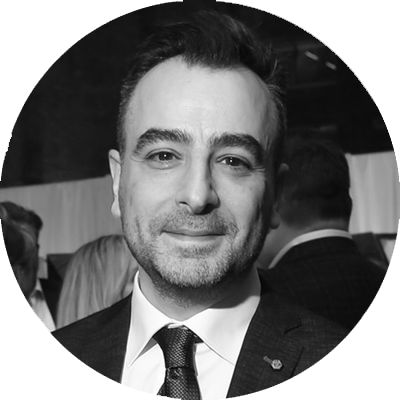
Editor-in-Chief, The Walrus



